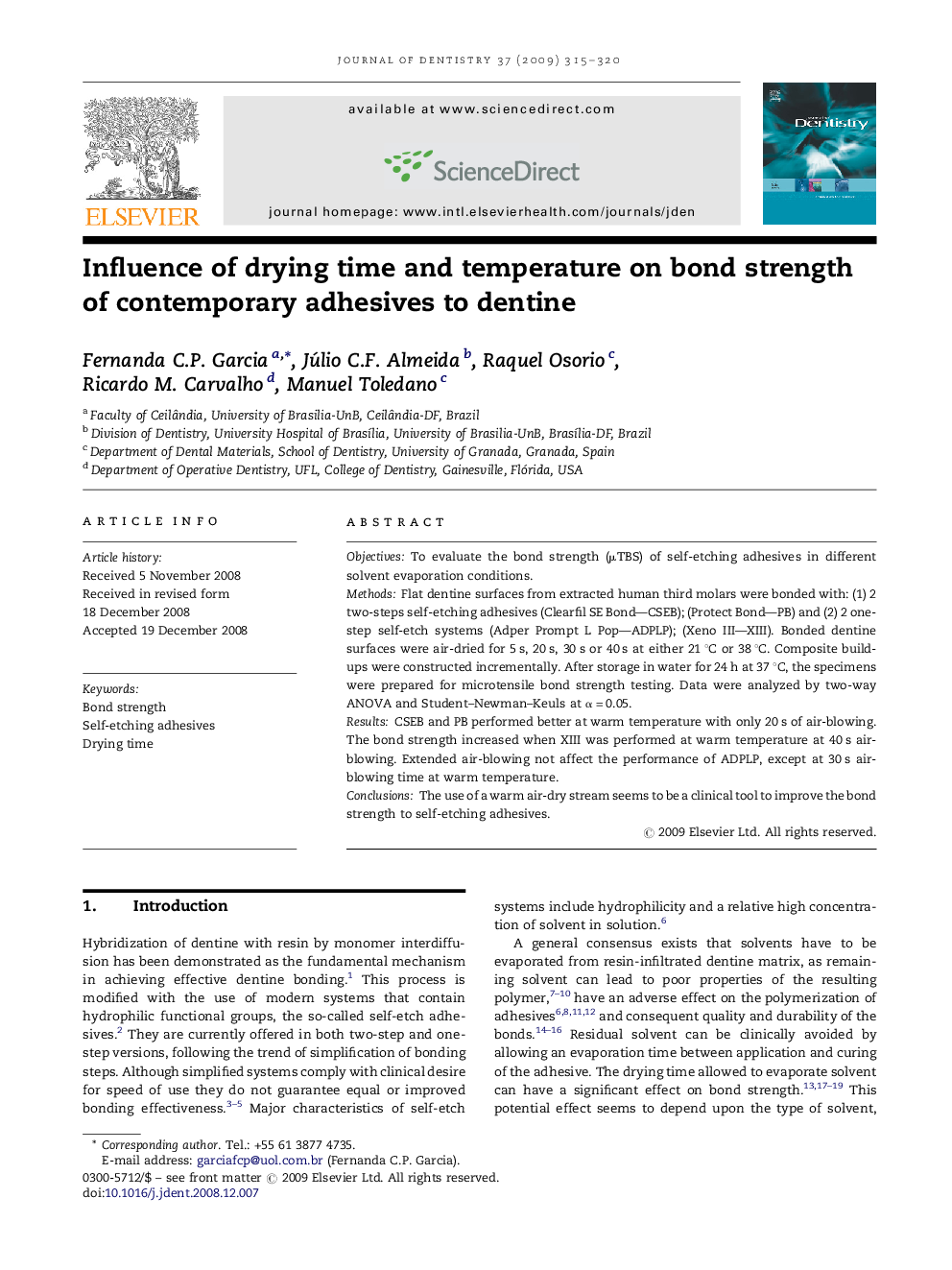| Article ID | Journal | Published Year | Pages | File Type |
|---|---|---|---|---|
| 3145374 | Journal of Dentistry | 2009 | 6 Pages |
ObjectivesTo evaluate the bond strength (μTBS) of self-etching adhesives in different solvent evaporation conditions.MethodsFlat dentine surfaces from extracted human third molars were bonded with: (1) 2 two-steps self-etching adhesives (Clearfil SE Bond—CSEB); (Protect Bond—PB) and (2) 2 one-step self-etch systems (Adper Prompt L Pop—ADPLP); (Xeno III—XIII). Bonded dentine surfaces were air-dried for 5 s, 20 s, 30 s or 40 s at either 21 °C or 38 °C. Composite build-ups were constructed incrementally. After storage in water for 24 h at 37 °C, the specimens were prepared for microtensile bond strength testing. Data were analyzed by two-way ANOVA and Student–Newman–Keuls at α = 0.05.ResultsCSEB and PB performed better at warm temperature with only 20 s of air-blowing. The bond strength increased when XIII was performed at warm temperature at 40 s air-blowing. Extended air-blowing not affect the performance of ADPLP, except at 30 s air-blowing time at warm temperature.ConclusionsThe use of a warm air-dry stream seems to be a clinical tool to improve the bond strength to self-etching adhesives.
